P3 Activities. History Lesson
In November 2018, the students from COLEGIUL NATIONAL „MIHAI EMINESCU”, PETROSANI, ROMANIA, had lessons of local history, focusing on the origins of the local population and their customs and traditions. The activity was coordinated by Mr Dorin Minel Raduti, history teacher.
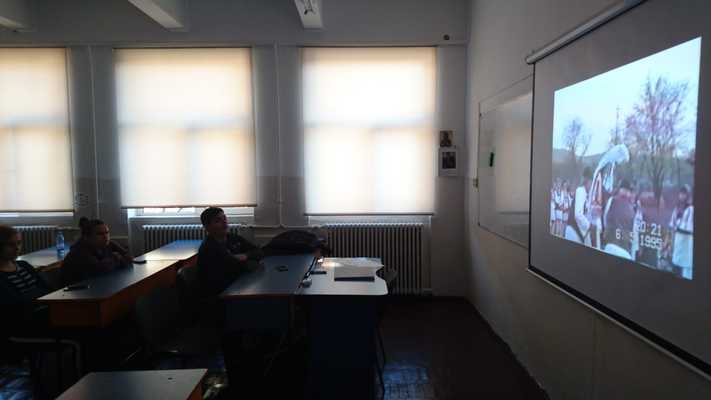
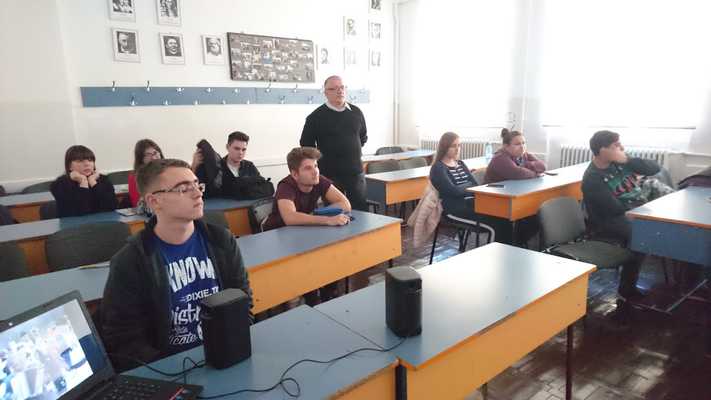
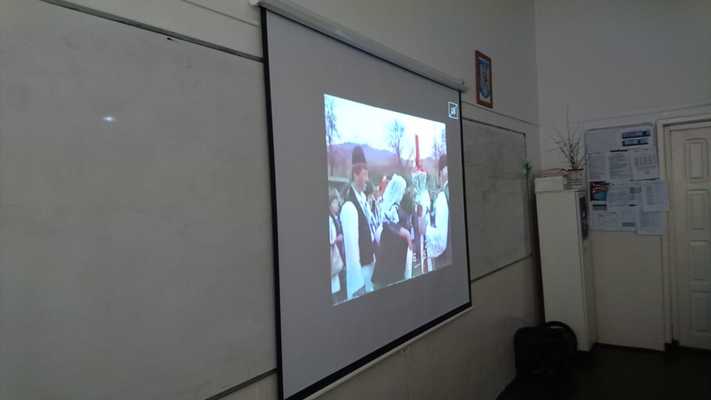
Then, on 2 November 2018, guided by the history teacher, Mr Dorin Raduti, they organized an exhibition entitled ”Local Traditional Architecture”.
Here are some photos taken at the exhibition.
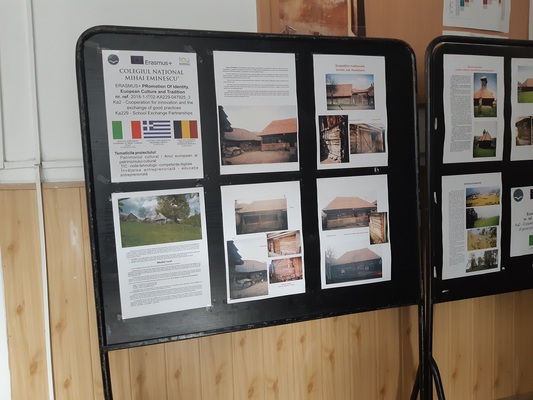
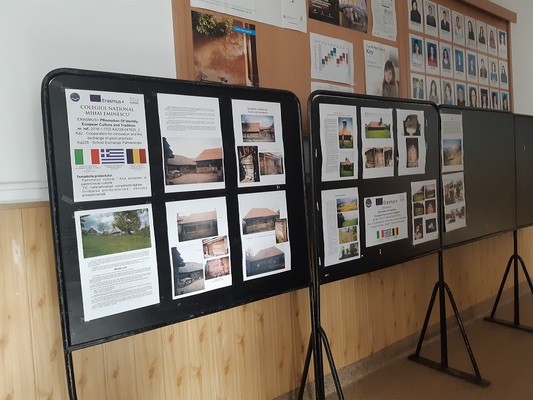
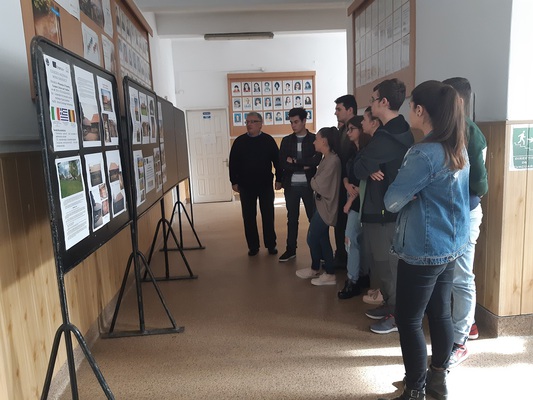
In order to make it known abroad and to give you the chance to learn more about the local population, they made the following video:
THE MACEDONIAN STRUGGLE MUSEUM (2 GENIKO LIKIO HORTIATI - P3.4 ACTIVITY)
Οn 15 November 2018 a group of 30 pupils of our school visited the Macedonian Struggle Museum in the center of Thessaloniki. The museum is dedicated to the "Macedonian Struggle" which is a very crucial part of the local history and the history of Greece in general. In the period 1904-1908 the struggle has taken place by the Greek populations of the region, with the support of the Greek state, against the threats of the other Balkan countries to conquer them.
The museum features relics of this period such as weapons, uniforms, photographs and other personal items of the protagonists of the time. In specially designed spaces there are scenes of the everyday life of the era, such as a school class, a house of a typical farm house, and miniature battles. At another point the visitor can see photos from the museum's rich archive. We also watched audiovisual material related to this period and we were informed about the educational and publishing activity of the institution.
The pupils produced a relative presentation about their educational visit to the museum:
GR_P3_4_THE MACEDONIAN STRUGGLE .pdf
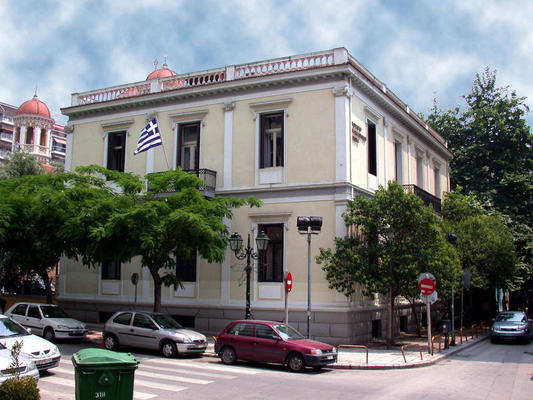
More information on the Museum's website: http://www.imma.edu.gr/imma
EDUCATIONAL VISIT AT THE ROUPEL FORT (2 GENIKO LIKIO HORTIATI - P4.4 ACTIVITY)
On 20th December the A’ Class of our school visited the Roupel Fort on the Greek-Bulgarian borders.
These strongholds were built to defend Greece from a Bulgarian attack, because at that time, 1936-1940, Bulgaria was outside the Balkan Friendship Pact and was seeking to retake the Greek lands it had occupied but had not managed to keep during the Balkan Wars (1912-1913). In March 1941, Bulgaria joined the German Axis of Japan of Italy with the enticing promise that the whole of Eastern Macedonia and Western Thrace would be given to Bulgaria.
This fortification line was named after its designer and creator, the then Prime Minister and Minister of National Defense of Greece, Ioannis Metaxas. The Metaxa line covered 215 km of the 497 km of the Greek-Bulgarian border, which was considered the main threat to Macedonia and included 21 Fortresses. The Rupel Fort, built on the western slopes of Mount Angistro on the River Strymonas, together with the fortress Paliourionas, secured the narrow streets.
Works began on Kerkini in 1936. The strategy, the regular design, the technical execution and the concept were designed by Greek engineering officers as a whole, and with the regular support of infantry and artillery officers and the NTUA contribution.
The works consisted mainly of underground tunnels including individual terrestrial complexes with observatories, fire and an enormous development of anti-tank trenches, anti-tank barriers and concrete bands in double and triple stop lines, all of which during that times was a titanic work.
The underground facilities of each fortification included officers chambers, soldiers' chambers, telephone center, galley, water tanks, sanitary facilities, food warehouses (for 15 days), surgery, pharmacy, ventilation systems, lighting (generators, oil lamps, torches), drainage, external combat positions, anti-tank barriers, anti-aircraft weapons positions, etc. The Roupel Fort covers 6 km and is one of the largest forts.
On April 6, 1941, the German army attacked against Greece. Despite the heroic resistance of the forts, which are "not surrendered, but only occupied", as their commander said, the line was overwhelmed when the Germans invaded Greece from Yugoslavia. Adolf Hitler, in a speech at the Reichstag, May 4, 1941, said: "I have to admit that the Greek soldier fought with extraordinary bravery and surrendered only when all his resistance was impossible. Therefore, I decided not to keep the Greek soldier as prisoner soldiers and the officers to keep their own weapons."
References: http://kpe-poroion.gr
A pupil’s opinion about our visit: “We admired the historical Roupel Fort, the military guide brought us back to the heroic era of the battles. We fell really proud of our ancestors”
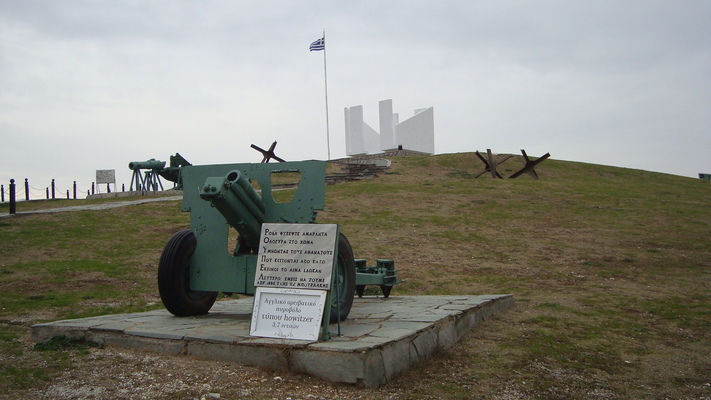
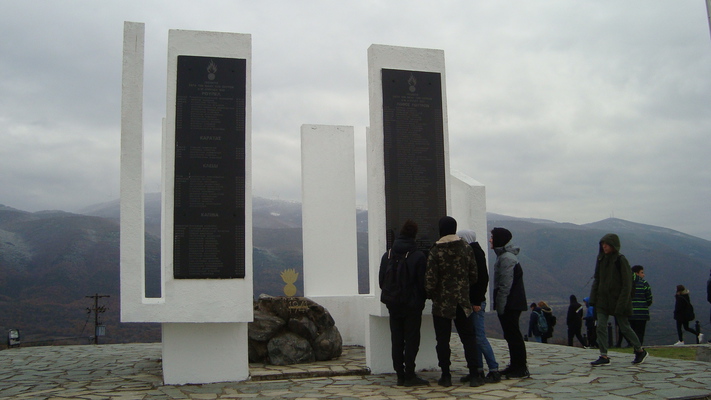
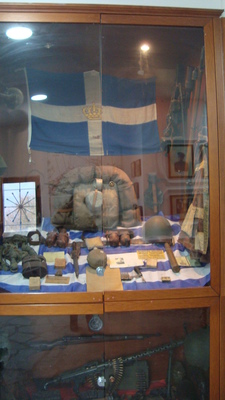
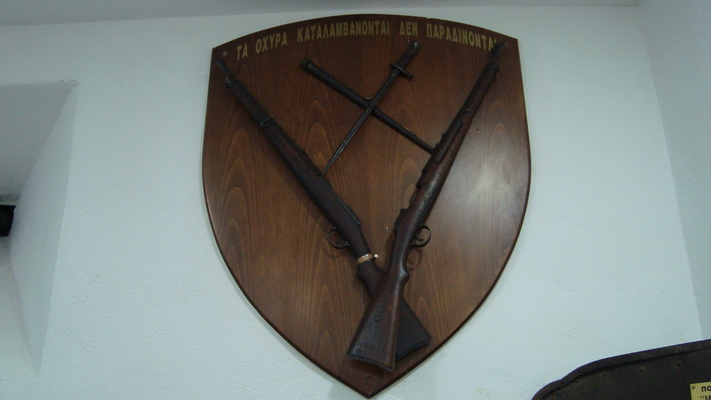
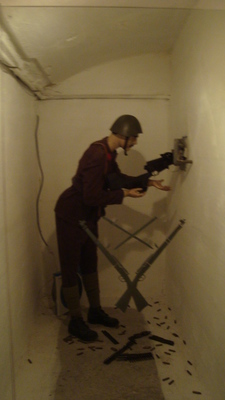
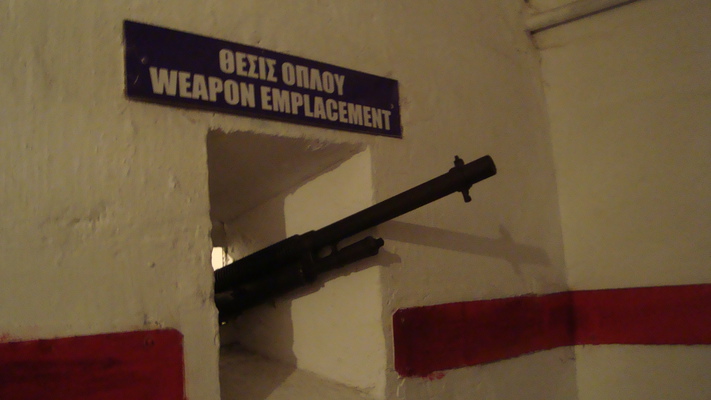
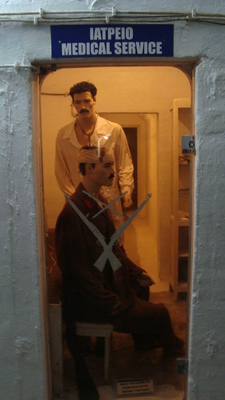
EDUCATIONAL VISIT AT THE EXHIBITION "EVIDENCE OF THESSALONIKI'S POSTAL HISTORY" (2 GENIKO LIKIO HORTIATI, P5.4 ACTIVITY)
On 25 January 2019 the Greek pupils visited the exhibition “Evidence of Thessaloniki’s postal history” at the Institute of History in Thessaloniki.
The material presented belongs to the collector Giorgos Thomareis. The development of the collection included and presented the history of communication between the city of Thessaloniki and the world through postal letters, envelopes and cards. The collector, Giorgos Thomareis, notes "The development of Thessaloniki in the 18th and 19th centuries mainly coincided with the enormous increase in human communication through transport, commerce and correspondence and consequently postal development. This fact makes the Postal History of Thessaloniki a very charming subject for the Historic Researcher but also for the collector and philater”.
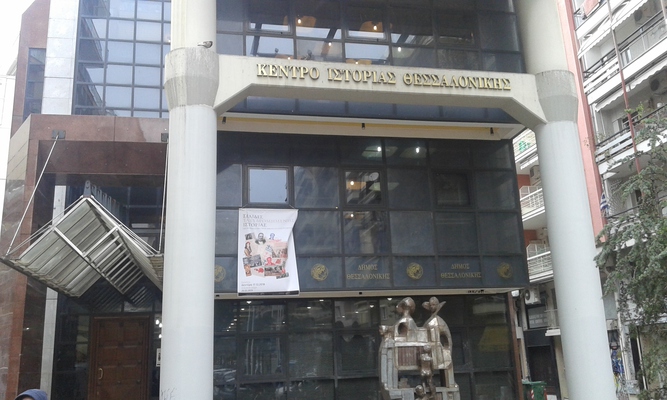
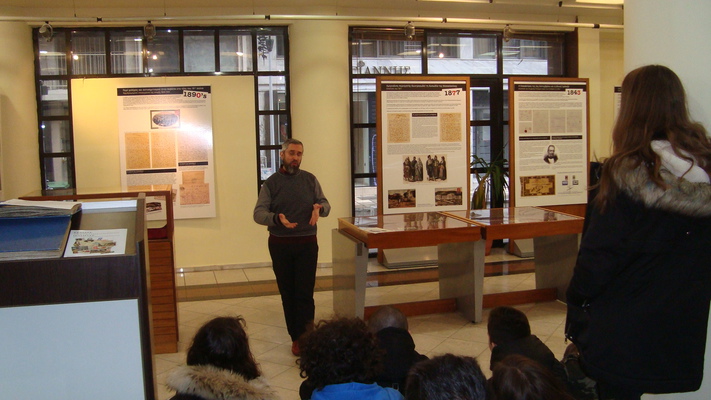
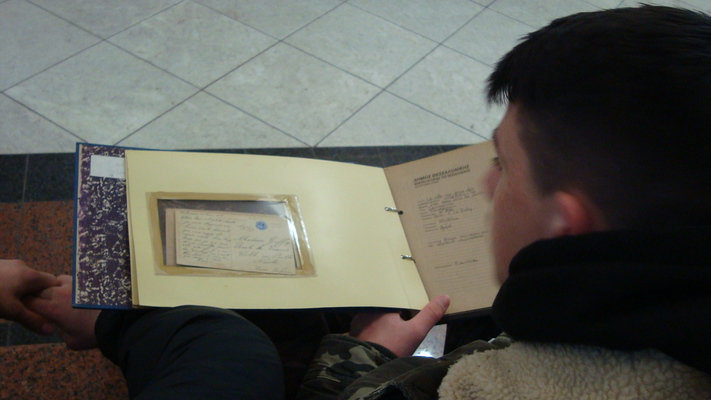
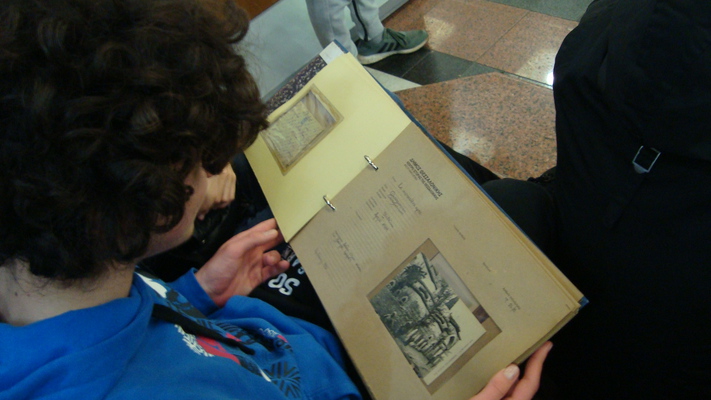
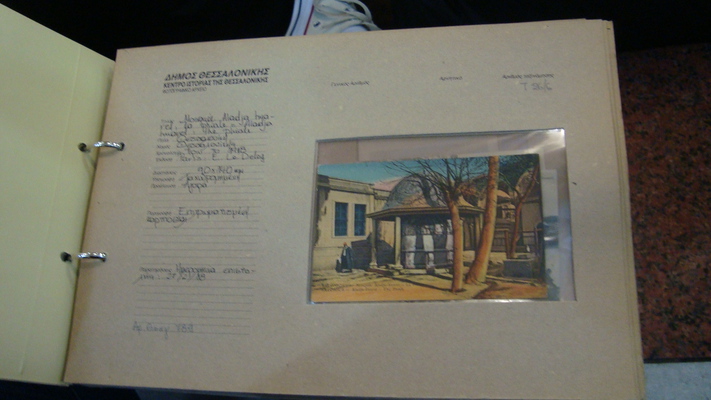
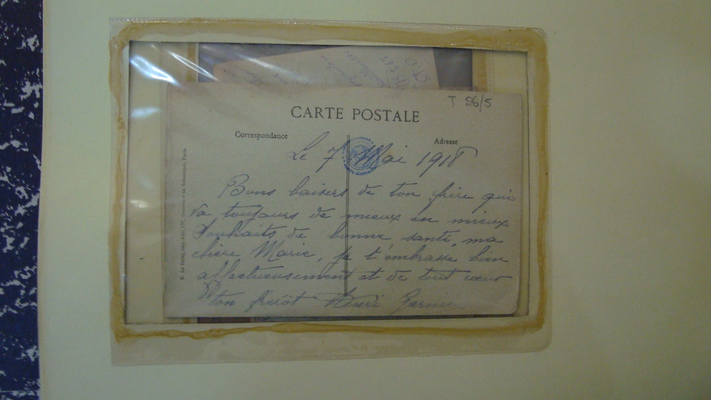
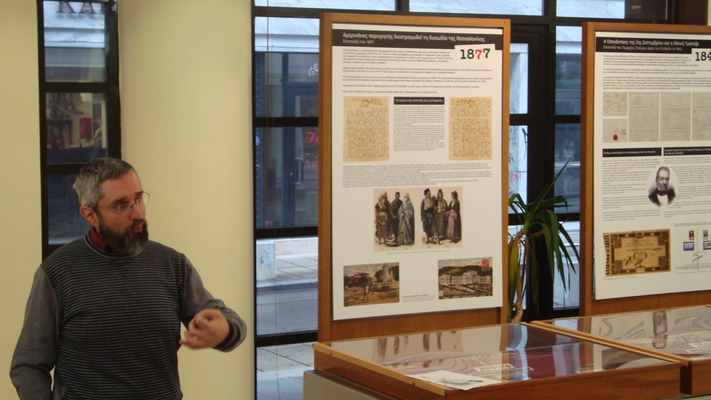
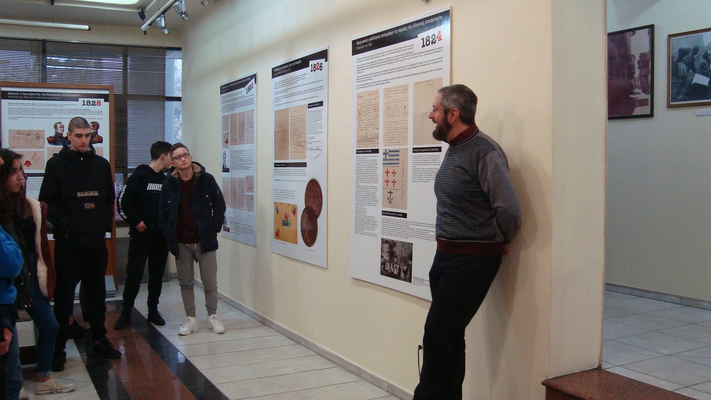
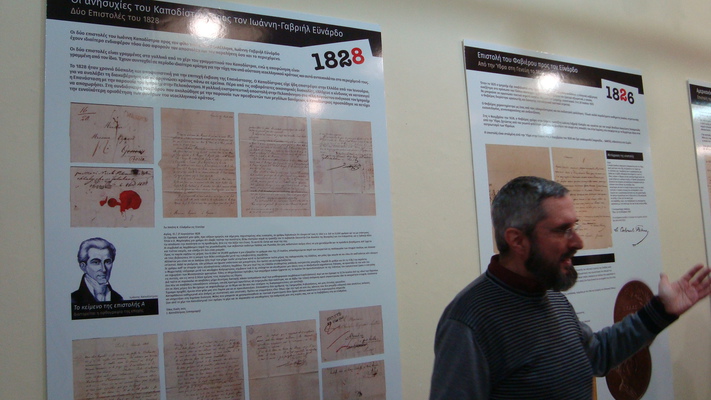
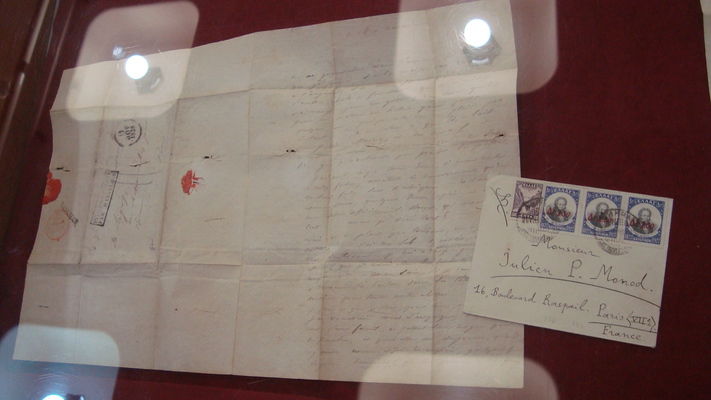
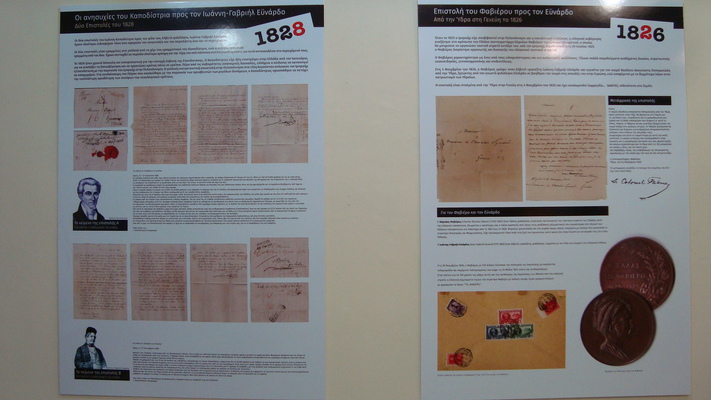
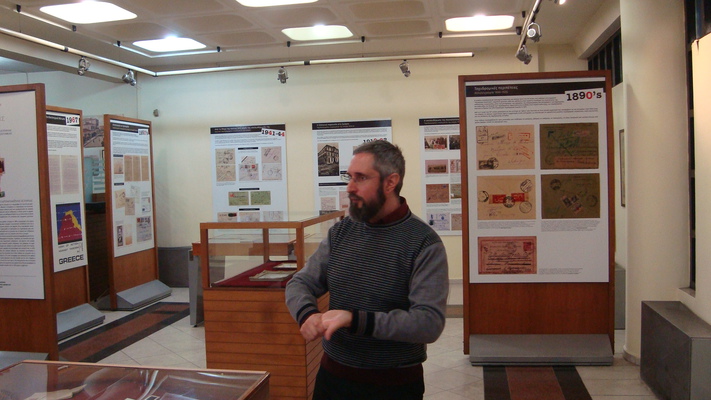
EDUCATIONAL VISIT AT THE EXHIBITION “THE HISTORY OF THE TUBERCULOSIS SANATORIUM AND THE G. PAPANIKOLAOU HOSPITAL” (2 GENIKO LIKIO HORTIATI, P8 ACTIVITY)
In April 2019 the Greek pupils of A Class visited the exhibition “The history of the tuberculosis sanatorium and the G. Papanikolaou Hospital” at the Institute of History in Thessaloniki. The exhibition followed the founding (1920) and operation of the sanatorium at Asvestohori and the tuberculosis settlement that was created against it, the isolation and stigmatization of thousands of patients and their families in Thessaloniki and the wider area of Macedonia, until the discovery of anti-tuberculosis drugs, and the gradual transformation of the institution into a modern hospital.
The pupils had the opportunity to see photographic material, documents, headlines and newspaper reports from the institution's centuries-old history and also to watch a theatrical play about the history of the sanctuary.
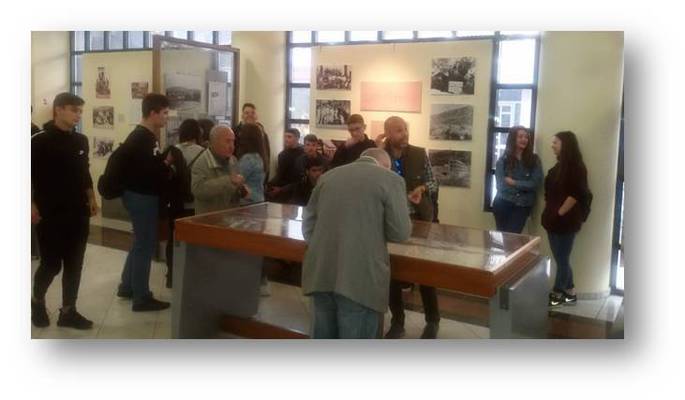
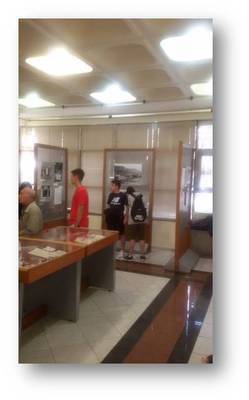
The pupils of A Class prepared a presentation about their visit at the exhibition:
GR_P8_1_THE_SANATORIUM OF ASVESTOHORI.pdf
EDUCATIONAL VISIT AT THE ACROPOLIS AND THE MUSEUM OF ACROPOLIS IN ATHENS (2 GENIKO LIKIO HORTIATI-P9 ACTIVITY)
On May 4 and 5, 2019 the A class of our school visited the Hellenic World Cultural Center and the Acropolis in Athens.
The "Hellenic Cosmos" Cultural Center is a state-of-the-art Cultural Center and Museum that stands out for its innovative programs. It is a multipurpose area where visitors experience Greek history and culture and at the same time a living cell of cultural creation. The purpose of the foundation is to preserve the historical memory and the Greek tradition, to make the ecumenical dimension of Hellenism conscious, to make its contribution to the evolution of culture, so that the past can serve as a reference point for the shaping of the present and the future and to inspire modern thought again by the Greek spirit.
"Tholos" is the new dome-shaped Virtual Reality "Theatre" of Hellenic Cosmos which hosts the digital collections of Hellenic Cosmos and it has a capacity of 132 persons. It looks like a planetarium because of the hemispherical shape of the projection surface. For the first time worldwide, stereoscopic projection across the hemispherical surface is provided. Views are interactive, viewer-controlled, not static.
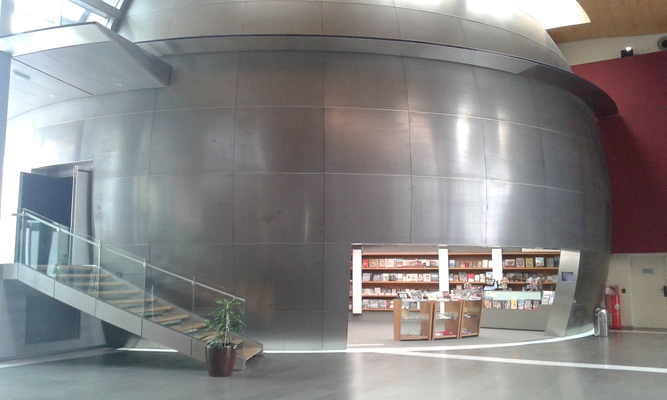
During our visit to the Hellenic Cosmos, we had the opportunity to visit the Tholos and explore virtual reality in ancient Greek history. Our students traveled to Athens in the 5th century B.C. They saw in front of them all the buildings in the "Sacred Rock" in their true scale and dimensions. Using the new technologies, they admired the most architecturally complex buildings of the Acropolis, such as the Parthenon, the Erechtheion, the Temple of the Victory, the Propylaea and the statues that adorned them in their natural colors. At the same time, temples and statues, which have not survived to this day, are still alive, such as Arrephorion, the Sanctuary of Zeus, the Sanctuary of Artemis of Braunonia, the Bronze Age, the Parthenon sculpture with the golden statue of the Parthenon.
After this unique experience offered by our three-dimensional tour of the Acropolis Rock, the next day the students walked on the road leading to the Holy Rock of Acropolis and admired the Parthenon and the Erechtheion with the Caryatids.
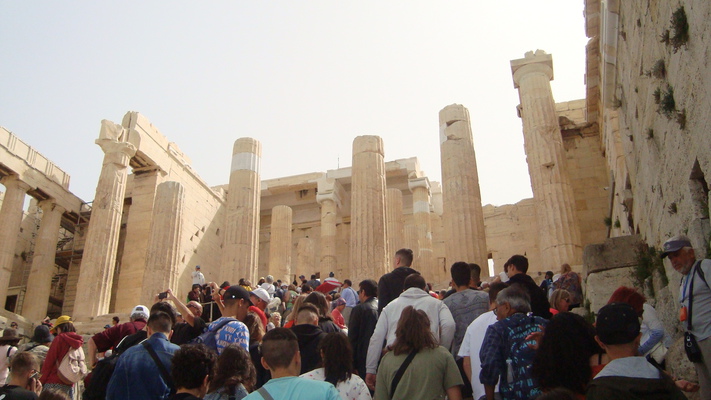
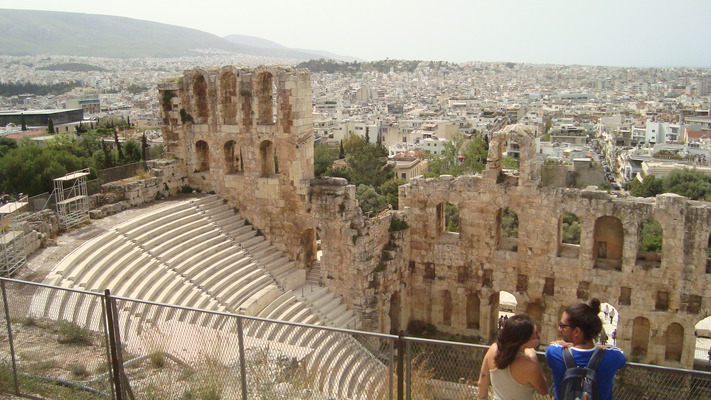
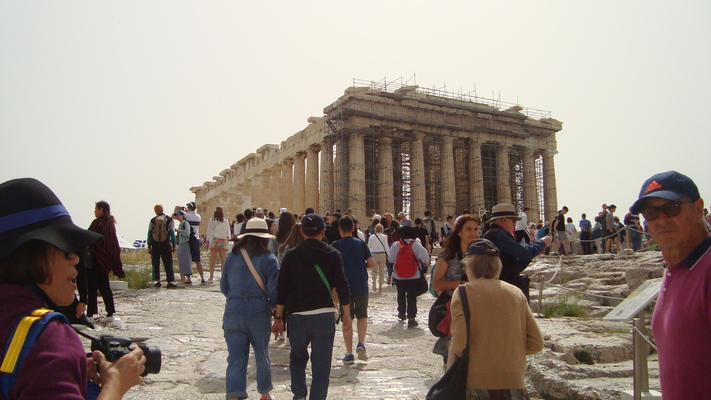
Then we visited and were guided at the Acropolis Museum.
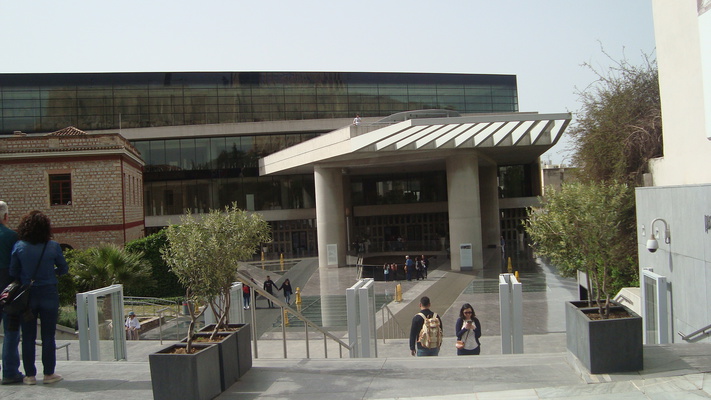
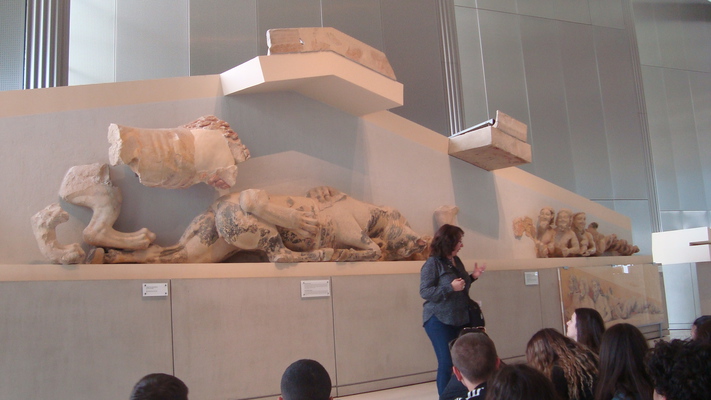
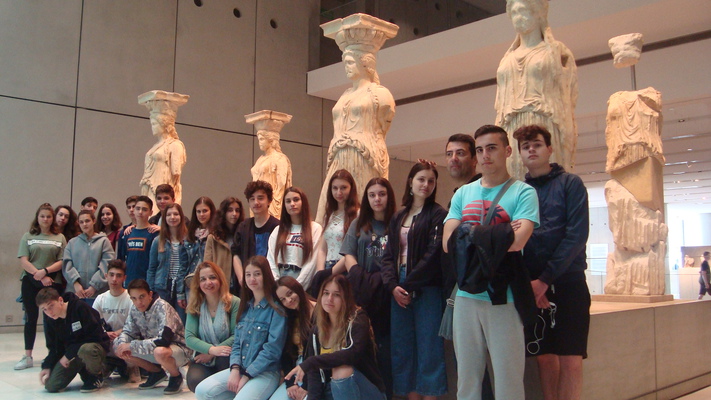
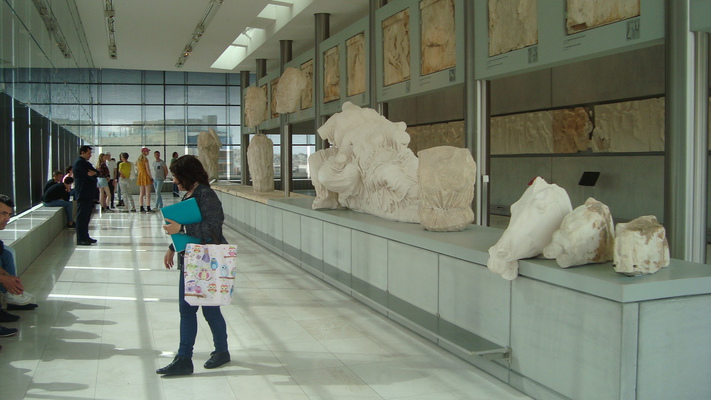
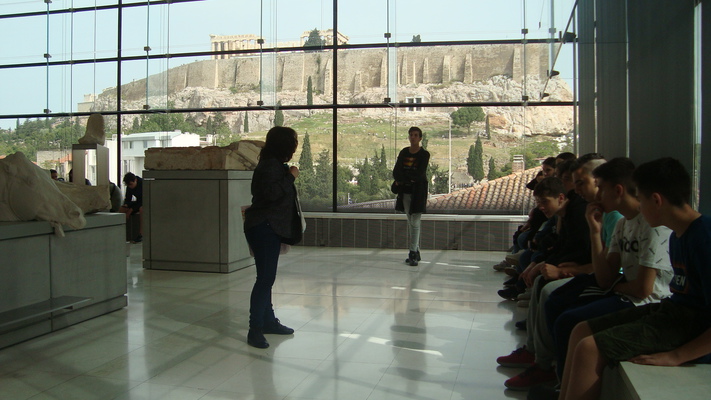 The new museum building was established in 2003 and opened to the public on June 21, 2009. On July 20, 2009, the inauguration of the Museum by the President of the Greek Republic, Mr. K. Papoulias, was held in the presence of the President of the EU and a host of foreign leaders. The then Minister of Culture, A. Samaras, in a symbolic movement spread around the world, placed a piece of marble returned from the Vatican Museum in a Parthenon metope. The move symbolized the Greek call for the reunification of the marbles at the new Acropolis Museum.
The new museum building was established in 2003 and opened to the public on June 21, 2009. On July 20, 2009, the inauguration of the Museum by the President of the Greek Republic, Mr. K. Papoulias, was held in the presence of the President of the EU and a host of foreign leaders. The then Minister of Culture, A. Samaras, in a symbolic movement spread around the world, placed a piece of marble returned from the Vatican Museum in a Parthenon metope. The move symbolized the Greek call for the reunification of the marbles at the new Acropolis Museum.
The museum is located on the southern slope of the Acropolis. Following an international competition, the first prize was awarded to the architectural office of Bernard Tsoumi and the office of Mich. Fotiadis. Tsoumi's plan involves three conceptions: light, movement and architectural planning. The museum relies on natural light and is built around a concrete core with the exact dimensions of the Parthenon frieze. In several places, the floors inside and outside the building are transparent, allowing the view of the underlying antiquities. The museum also provides a 200-seat amphitheater, a virtual reality room, an official venue, and a periodical exhibit room.
In May 2013, the British newspaper Sunday Times ranked the Acropolis Museum at No.3 on the list of the 50 best museums in the world. In November 2010 it was voted the Best Museum of the World by a competition of the British Journalists of Tourism Editors.
During the visit to the Museum, the Parthenon Hall has a special place. It is in the form of a huge glass room that follows the proportions and orientation of the temple itself, thus diverging from the orientation of the rest of the building. The glass surfaces surrounding it provide ideal lighting for the Parthenon sculptures as well as direct visual view of the Acropolis. The original sculptures as well as the copies of those missing are exhibited in places similar to those on the temple. This creates the opportunity to reconnect all the surviving sculptures of the temple as well as a unique environment for understanding the achievements that the monument itself represents.
References:
http://acropolis.tholos254.gr/gr/index.html
https://www.culturenow.gr/venue/ellhnikos-kosmos-idryma-meizonos-ellhnismoy/
https://el.wikipedia.org/wiki/%CE%9C%CE%BF%CF%85%CF%83%CE%B5%CE%AF%CE%BF_%CE%91%CE%BA%CF%81%CF%8C%CF%80%CE%BF%CE%BB%CE%B7%CF%82
http://www.fhw.gr/cosmos/index.php?id=1&m=1&lg=
https://www.theacropolismuseum.gr/sites/default/files/glypta_parth_gr.pdf
P13. Visit to "St. Barbara" Orthodox Church and "St. Barbara" Ethnographic Complex, Petrosani
On Tuesday, 3 September 2019, 18 students from "Mihai Eminescu" National College along with Mrs. Stefania Manea, coordinator of the Erasmus+ Project "Promotion Of Identity, European Culture and Tradition", ref. no. 2018-1-IT02-KA229-047925_3, and Mr. Dorin Raduti, responsible for project evaluation and monitoring, visited "St. Barbara" Orthodox Church (St. Barbara is the patron saint of miners), a construction made of wood, that shines among the apartment blocks located on the outskirts of Petrosani not only by its beauty, but also by the acts of kindness shown there such as: feeding the poor, offering them clothes, school supplies and many other things made possible by Father Nicolae Tanase (our host and guide during the visit), the other priests who serve the church and the team of volunteers, which you can join, too!
On this occasion the students had the opportunity to get familiar with the Maramuresan architectural style of the church. The characteristic of this style is the fact that the main material used is wood. It appeared during the time when Transylvania was under Austro-Hungarian influence. They forbade the construction of Orthodox churches made of stone, and even destroyed some of those made of wood on the pretext of using the space for other purposes, in order to spread Greco-Catholicism. Yet, the Romanians adapted and came up with something completely new: The Maramuresan Architectural Style. What makes this style completely special is its unique ability of making solid structures become "portable", such as this marvelous church. In essence, this style is based on attaching wooden beams by filling each other`s gaps, that way, allowing the structure to be attached and reattached anywhere in the world.
We also visited the underground funeral chapel, a mourning place for the people, yet a delight for the local architecture. It has been built in the Byzantine style, the structure having its walls and sustaining pillars made of bricks and a marvelous marble floor, being a place worthy of admiration.
The students also had the chance to see a traditional peasant house (where they admired a loom, various folk costumes, tools and pitchers, some of them being rarely pieces dating from the 1800`s) and a sheepfold (where women used to sleep and cook while the men were guarding the sheep outside), both reattached in the yard of the church thanks to the Maramuresan innovation and the inspiration of Father Nicolae, a meticulous observer of the life and customs characteristic of the “momarlani” communities.
We found the tour offered to us by Father Nicolae fascinating, because he offered us an insight into how people used to work, cook and live in the past, all those things reminding us of how beautiful the Romanian culture is. So, if you want to find out more about any of those thrilling topics, you should really consider visiting to this astonishing place, a thing we are all looking forward to doing it again as soon as possible!
By Denis Raducan
"St. Barbara"Orthodox Church and "St. Barbara" Ethnographic Complex
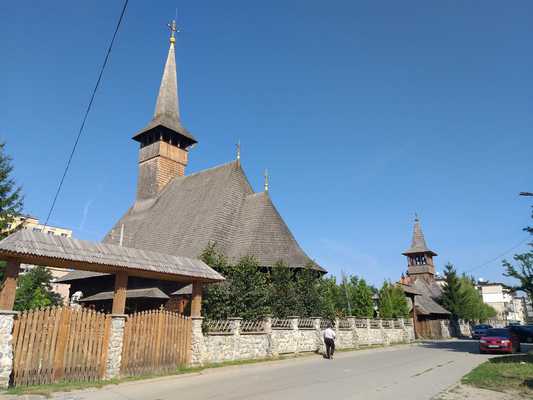
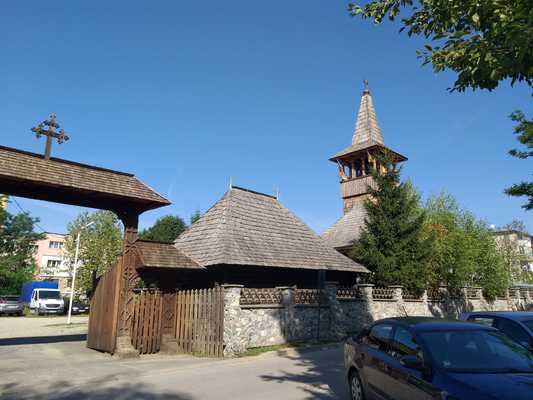
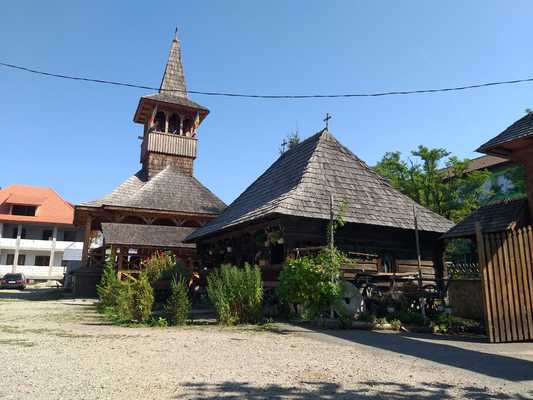
The students from the target group together with Father Nicolae Tanase and Mr. Dorin Raduti, responsible for project evaluation and monitoring
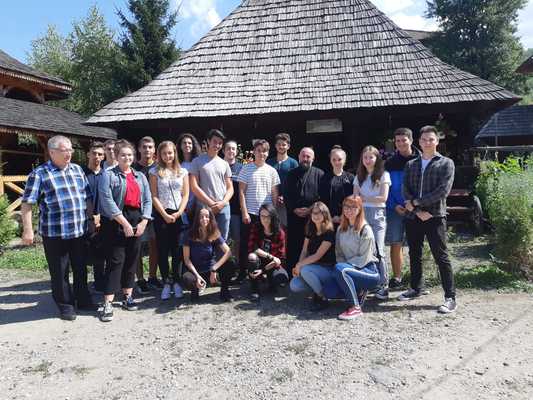
The students from the target group with Father Nicolae and Mrs. Stefania Manea, coordinator of the project
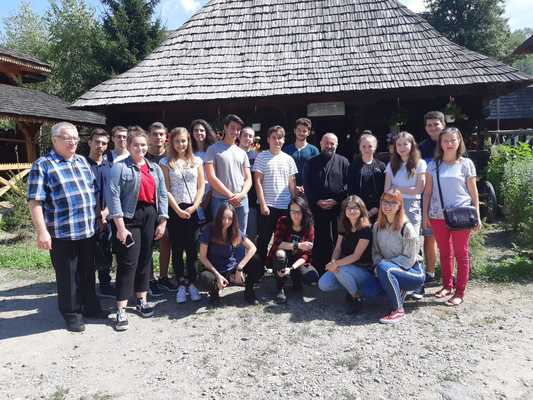
The students learning about local history, culture and architecture
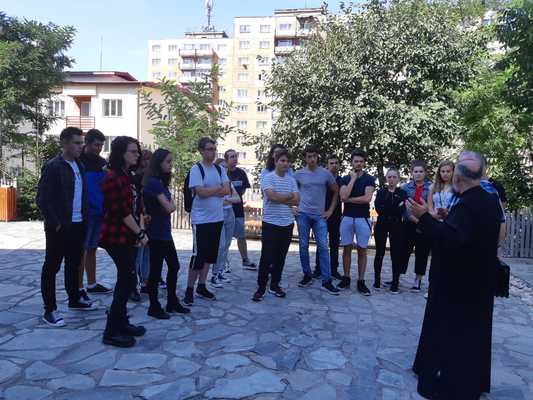
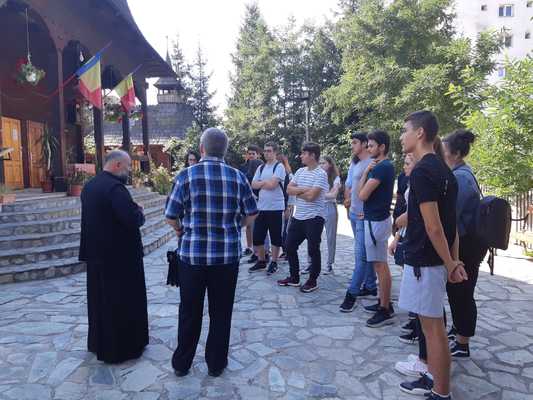
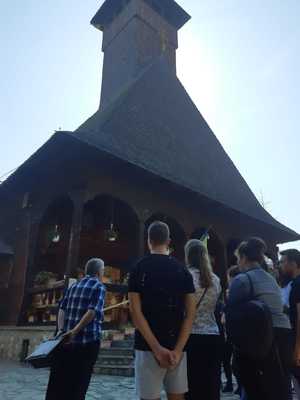
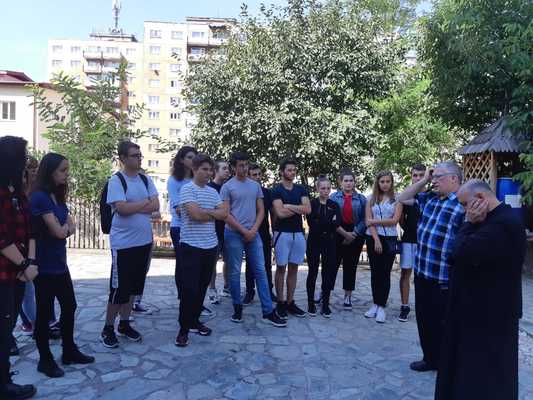
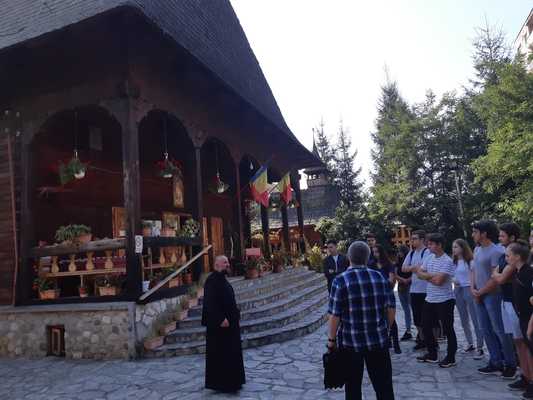
The students visiting "St. Barbara" Ethnographic Complex
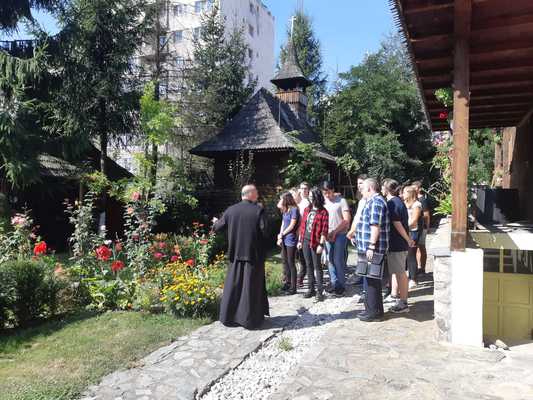
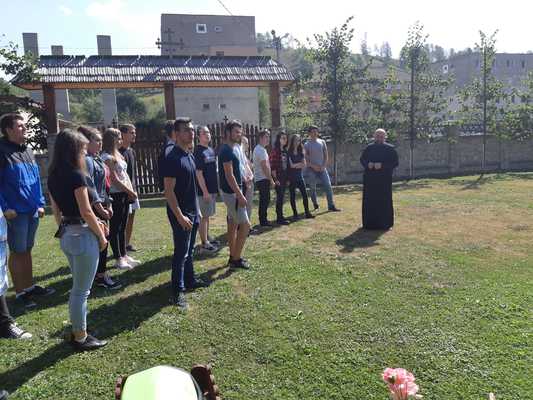
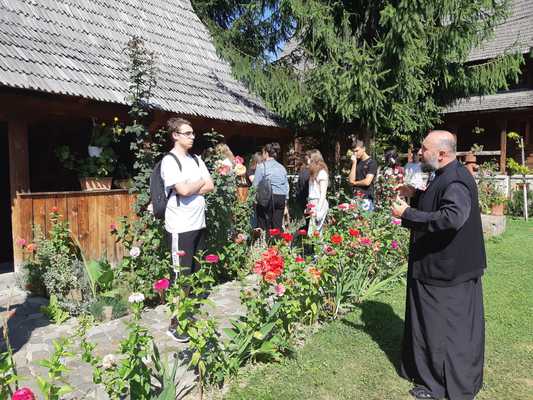
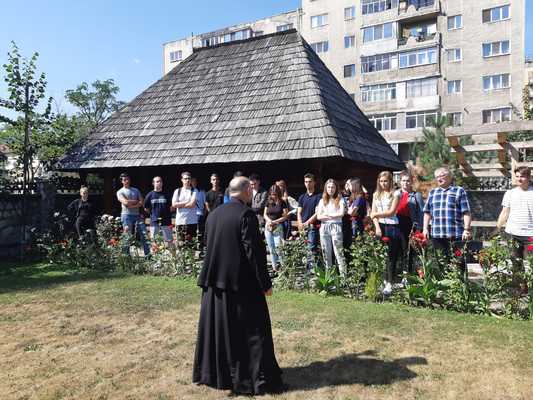
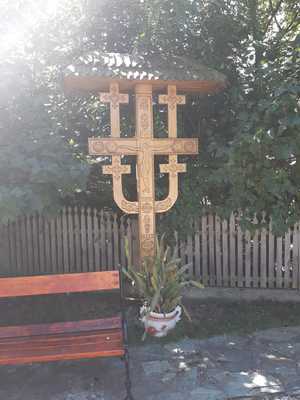
The group inside the church learning about the religious life of the local community
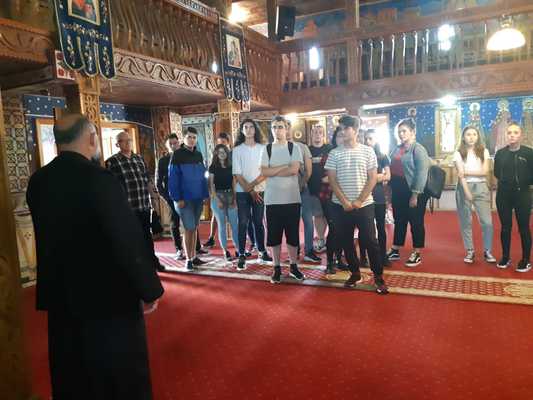
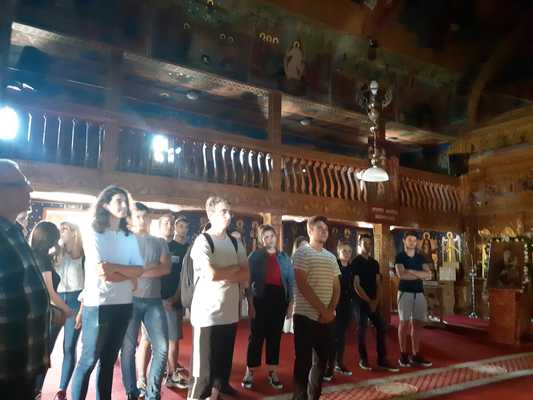
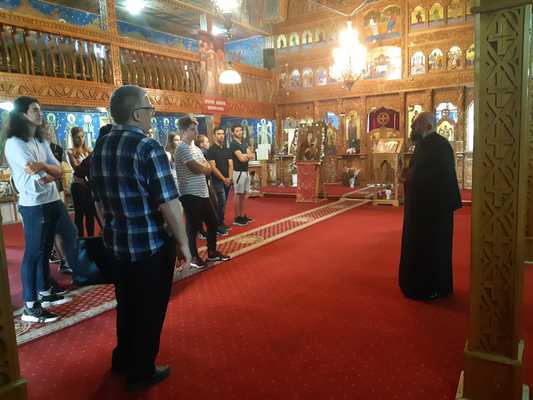
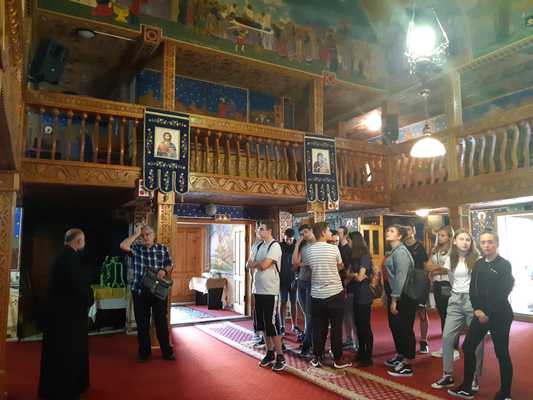
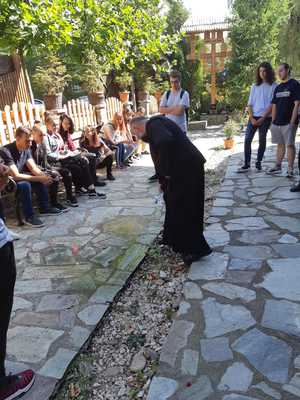
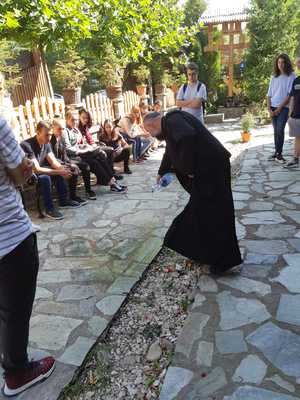
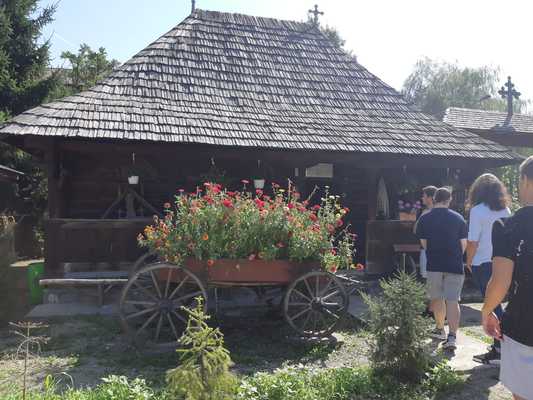
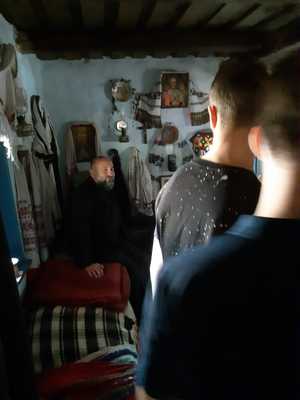
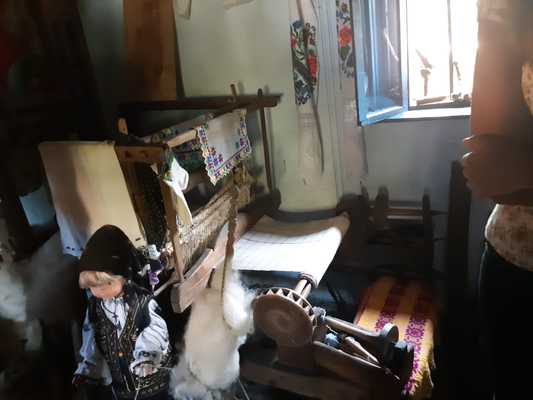
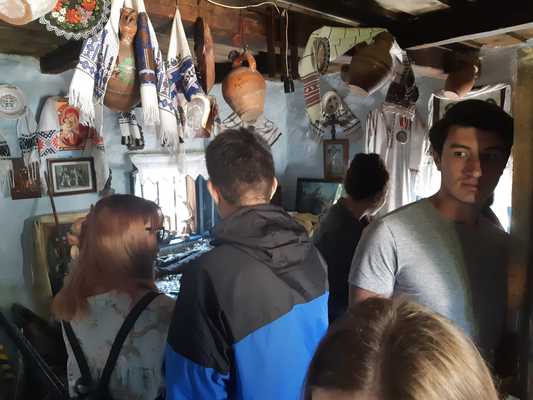
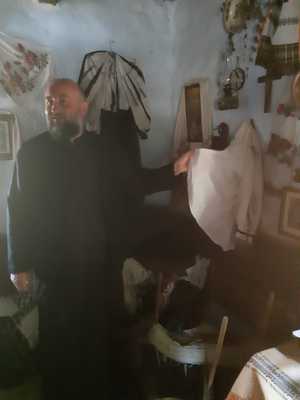
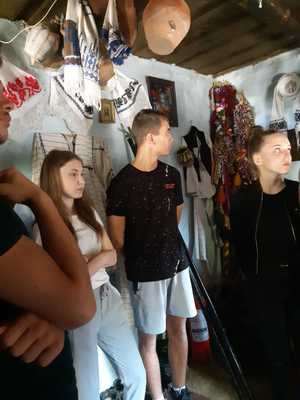
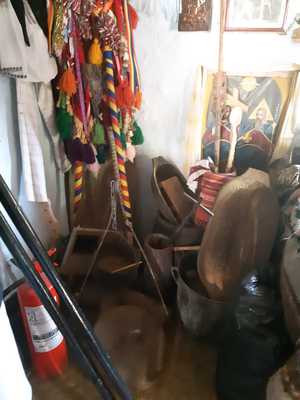
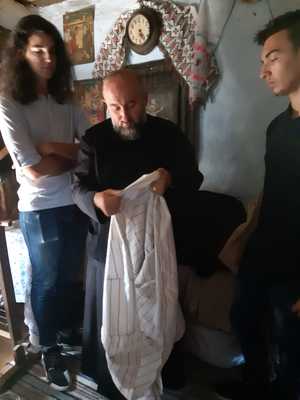
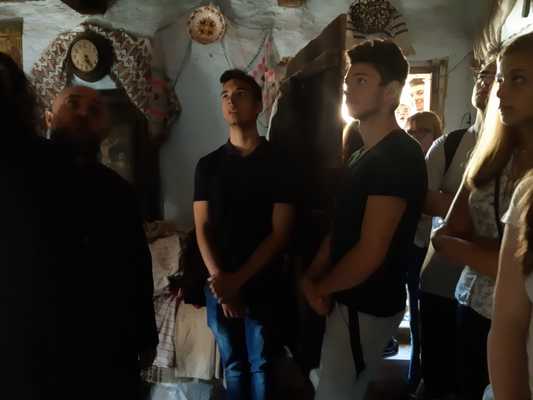
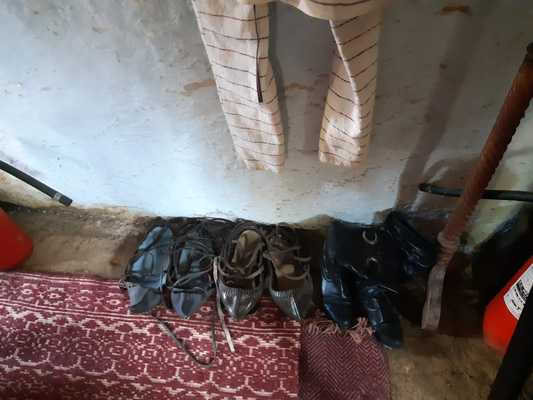
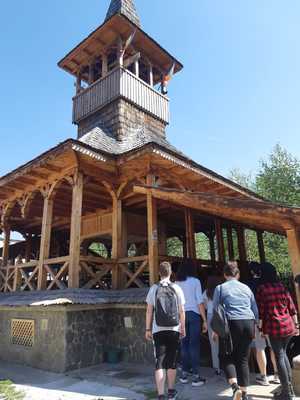
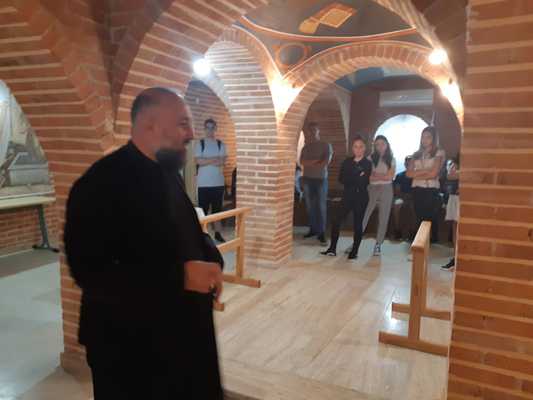
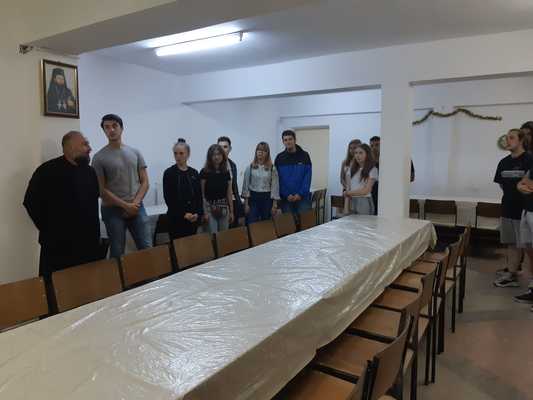
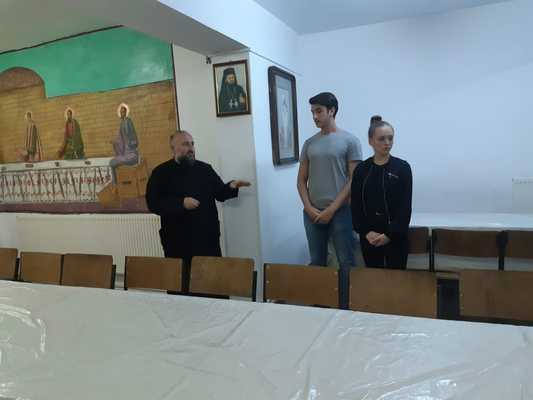
THE HOLOCAUST OF HORTIATIS (GENIKO LIKIO HORTIATI - P13 ACTIVITY)
In September 2019, on the occasion of the 75th anniversary of the Holocaust of Hortiatis on September 2nd 1944, the pupils of the Erasmus+ project of our school deepened in the history of the Holocaust.
THE HISTORY OF THE HOLOCAUST OF HORTIATIS
 Let’s go back to 1944. On the second of September in 1944, a group of guerilla fighters of ΕL.AS. attacked a small van with two Greeks which as usual were going to disinfect the water of Hortiatis with chlorine. When the van was near to the aqueduct, rebellions started shooting at it and killed both Greeks. This was the first attack. After 30 minutes, a second van with three Germans and two Greeks were also attacked. In this small fight two Germans were injured and one of them managed to escape and went to Asvestohori, a neighboring village. After these two attacks, the villagers asked the captain of the rebellions, Antoni Kazako if they should evacuate the village because they were afraid of the Germans but he said that they do not have to worry. The majority of the villagers stayed in Hortiatis and few of them packed their stuff and left Hortiatis. A few hours later, twenty trucks with German soldiers of Fris Soubert arrived and circled around Hortiatis. They started gathering the villagers in the square of the village and burning the houses. After that, they transferred them to the house of Evangelos Ntampoudis and burnt them alive. Another group was transferred to the bakery of Stefanos Gouramanis. They set a big machine gun and started killing everyone. Only two people managed to escape from the bakery. Lots of women were ravished and killed. This sad day 149 people were killed, 109 were small babies and women and 300 houses were burnt.
Let’s go back to 1944. On the second of September in 1944, a group of guerilla fighters of ΕL.AS. attacked a small van with two Greeks which as usual were going to disinfect the water of Hortiatis with chlorine. When the van was near to the aqueduct, rebellions started shooting at it and killed both Greeks. This was the first attack. After 30 minutes, a second van with three Germans and two Greeks were also attacked. In this small fight two Germans were injured and one of them managed to escape and went to Asvestohori, a neighboring village. After these two attacks, the villagers asked the captain of the rebellions, Antoni Kazako if they should evacuate the village because they were afraid of the Germans but he said that they do not have to worry. The majority of the villagers stayed in Hortiatis and few of them packed their stuff and left Hortiatis. A few hours later, twenty trucks with German soldiers of Fris Soubert arrived and circled around Hortiatis. They started gathering the villagers in the square of the village and burning the houses. After that, they transferred them to the house of Evangelos Ntampoudis and burnt them alive. Another group was transferred to the bakery of Stefanos Gouramanis. They set a big machine gun and started killing everyone. Only two people managed to escape from the bakery. Lots of women were ravished and killed. This sad day 149 people were killed, 109 were small babies and women and 300 houses were burnt.
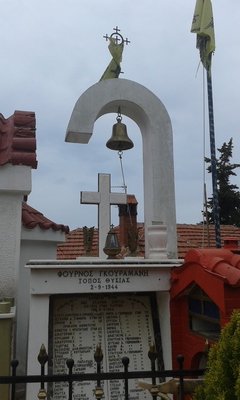
The Holocaust of Hortiatis reminds us that the woes of fascism and war stigmatize people's psyche and that the need for peace and reconciliation of all people remains timely.
The pupils of the Erasmus+ project of our school prepared a video about the Holocaust of Hortiatis.
You can find the video at:
https://youtu.be/4iCC3lc3Wzs
References:
https://blogs.sch.gr/2lykchort/olokaytoma/
https://www.youtube.com/watch?v=avfe96lemFI
https://www.youtube.com/watch?v=8Hf0MkCzT3M
EDUCATIONAL VISIT AT THE FIRST WORLD WAR CEMETERY "ZEITENLIK" (GENIKO LIKIO HORTIATI - P14.1 ACTIVITY)
On 17th October 2019, on the occasion of the 101st anniversary of the end of the First World War (November 2018), the pupils of the Erasmus+ project of our school (C Class) and the teachers Vassilia Lazaridou, Efstratios Tsakiris and Pelagia Saltamara visited the First World War Cemetery “Zeitenlik” in Thessaloniki.
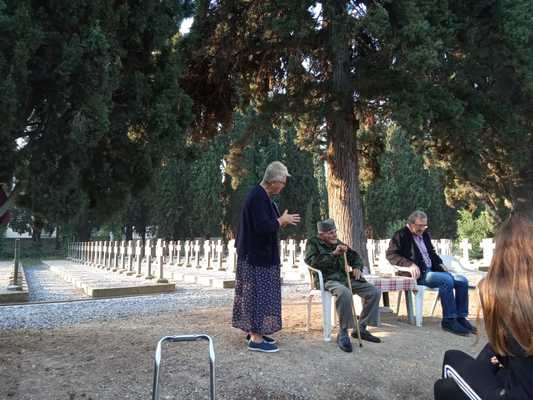
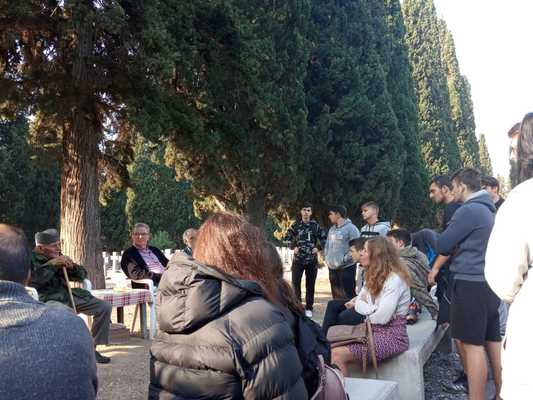
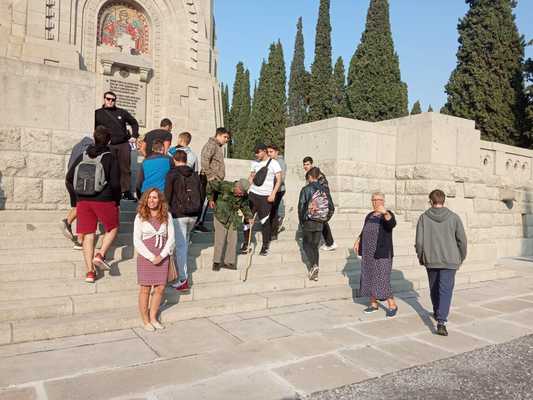
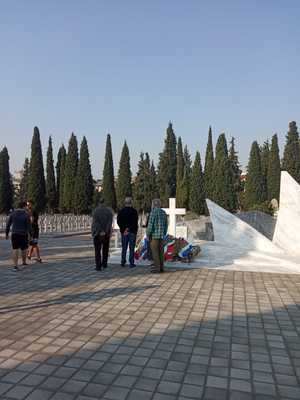
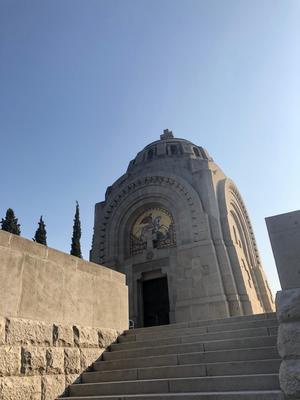
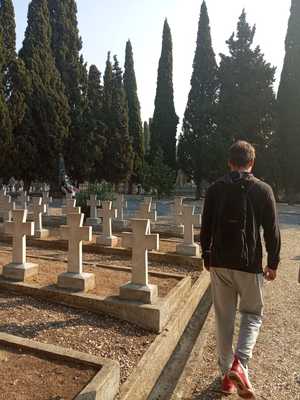
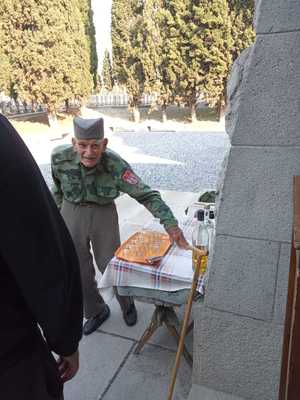
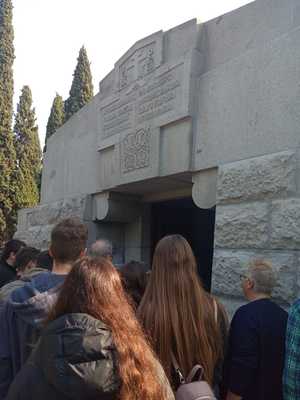
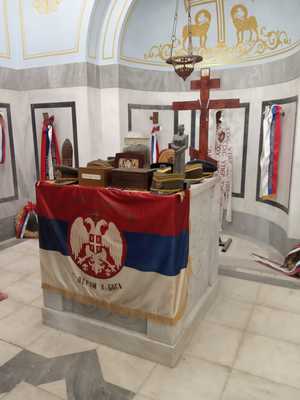
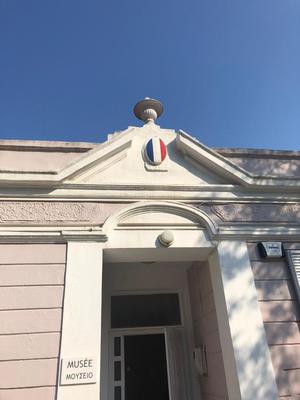
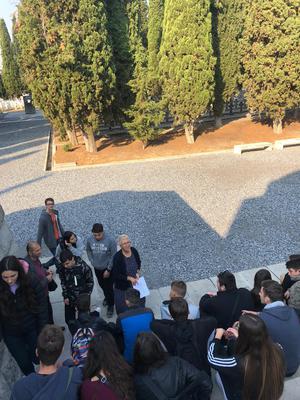
The Zeitenlik, also known as Serbian Cemeteries is located in Lagada Street on the West part of the city. It is a unique monument that reminds us of the legacy of all those who fought for freedom almost a century ago (1914-1918).
While the flames of the “Great War” were still burning high, terrible battles took place in the heart of the Balkan countries thus forming the “Macedonian Front”. Winning this battle turned out to be important and crucial for the outcome of the entire war.
The casualties were devastating for all sides. More than 20.500 soldiers of the countries that fought along the Entente alliance during the First World War were buried here making Zeitenlik the biggest military necropolis in Greece.
It is believed that this specific location was preferred because of the pre-existing catholic cemeteries and also because of the conversion of the neighboring buildings into hospitals. In 1920 the Greek government bought the land and ceded it to the allies after signing the initial foundation agreement among each nation.
Every year on October 11th representatives of the allied nations, the few remaining veteran soldiers and relatives gather here to honor all those who sacrificed their lives. A number of ceremonies are being held in honor of the fallen allies’ soldiers. The cemeteries accept many visitors from the Balkan countries, especially from Serbia. Each one of the five countries has its own sector (France 8.089 casualties, Serbia 7.500 casualties, Russia 400 casualties, United Kingdom 1.600 casualties, Italy 3.000 casualties).
The beautiful monument on the Serbian sector of the cemeteries was built in 1926 – 1936. Relics, flags dated back to the First World War and other important historical objects lie inside.
The Cemetery “Zeitenlik” reminds us the value of freedom and that the need for peace and reconciliation of all people remains timely.
The pupils of the Erasmus+ project of our school prepared a video about their educational visit at the First World War Cemetery “Zeitenlik”.
References:
https://inthessaloniki.com/item/zeitenlik-allied-military-cemetery/
https://el.wikipedia.org/wiki/Κοιμητήρια του Ζέιτενλικ
WATCHING THE DOCUMENTARY “THE GREAT FIRE OF SALONICA IN 1917: BIRTH OF A CITY” (GENIKO LIKIO HORTIATI - P16.4 ACTIVITY)
On 23rd December 2019, the pupils and teachers of our school watched at Olympion Cinema Thessaloniki the documentary “The Great Fire of Salonica in 1917: Birth of a City”, an archives-based documentary narrating the experiences of Thessaloniki’s residents during the biggest and most destructive fire in the history of the city. It reveals the philosophy and the backdrop of the unprecedented urban change that followed, changing forever the city.
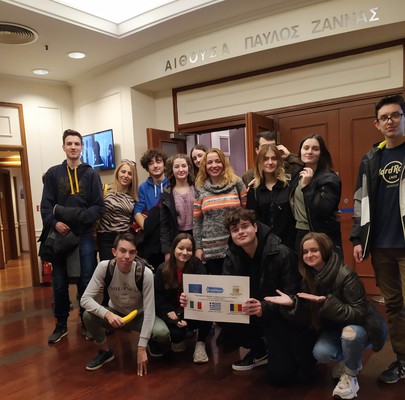
This documentary was suggested by a group of students of the Erasmus project who have already watched it on 11 November 2018 at the Town Hall of Pilea-Hortiatis during the first presentation of the film in our municipality.
Ioannis Katsenis, pupil of B Class, wrote about the documentary: “On 23rd December 2019 we watched the documentary “The Great Fire of Salonica in 1917: Birth of a City” at Olympion Cinema Thessaloniki. The documentary is a co-production of the Greek National TV and CosmoteTV, directed by Grigoris Vardarinos. The sixty-minute documentary chronicles the tragic events of August 1917 in Thessaloniki. The documentary describes the events with absolute accuracy and has very good music.
The fire, which left more than 75.000 homeless and engulfed almost the entire historic center of Thessaloniki in 32 hours, began on the afternoon of August 18, 1917, from a refugee camp near the city's northwest wall. More than 9.500 buildings, houses, shops, offices were burned. The multiracial and multilingual Balkan metropolis is finally being redesigned, with the decision of the government of Eleftherios Venizelos. Based on the plan of Ernest Hébrard, it is formed from scratch, in order to take the urban form it has today. The social, political and economic impact of the fire is a turning point in the city's history.
The director of the film, Mr.Vardarinos, used many historical sources and worked some years on them. The documentary is of exceptional quality, it is a successful production that was carried out with hard work and effort and we all watched it with great interest and admiration.”
You can find the trailer of the documentary at:
https://www.facebook.com/SalonicaGreatFire1917doc/videos/1880587552163745/
References
https://www.filmfestival.gr/en/movie-tdf/movie/8202
https://www.facebook.com/SalonicaGreatFire1917doc/
PRESENTING THE GREEK REVOLUTION OF 1821 IN FAMOUS PAINTINGS (GENIKO LIKIO HORTIATI - P30 ACTIVITY)
In February 2021, on the occasion of the 200 years (1821 – 2021) since the Greek war of independence against the Ottomans, the pupils of the Erasmus+ project studied the Greek revolution in famous paintings and prepared a relative presentation. The presentation was planned to be shared with our partners during the on line activities C5 in April 2021.
GR_P30_THE GREEK REVOLUTION IN ART WORKS.pdf
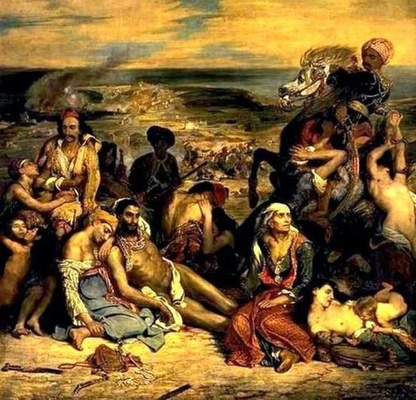
STUDYING THE CONTRIBUTION OF PHILHELLENISM IN EUROPE TO THE SUCCESS OF THE GREEK REVOLUTION AND THE CREATION OF THE GREEK STATE (GENIKO LIKIO HORTIATI - P31.1 ACTIVITY)
In March 2021, on the occasion of the 200 years (1821 - 2021) since the Greek war of independence against the Ottomans, the pupils of the Erasmus+ project studied the contribution of philhellenism in Europe to the success of the Greek revolution and the creation of the modern Greek State with special emphasis on the revolutionary ferment that took place in the region of present-day Romania, as well as and the contribution of the Italian Philhellenes and prepared a relative presentation. The presentation was planned to be shared with our partners during the on line activities C5 in April 2021.
GR_P31_PHILHELLENISM AND HE GREEK REVOLUTION.pdf